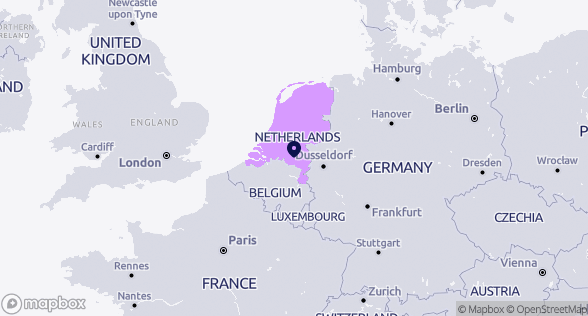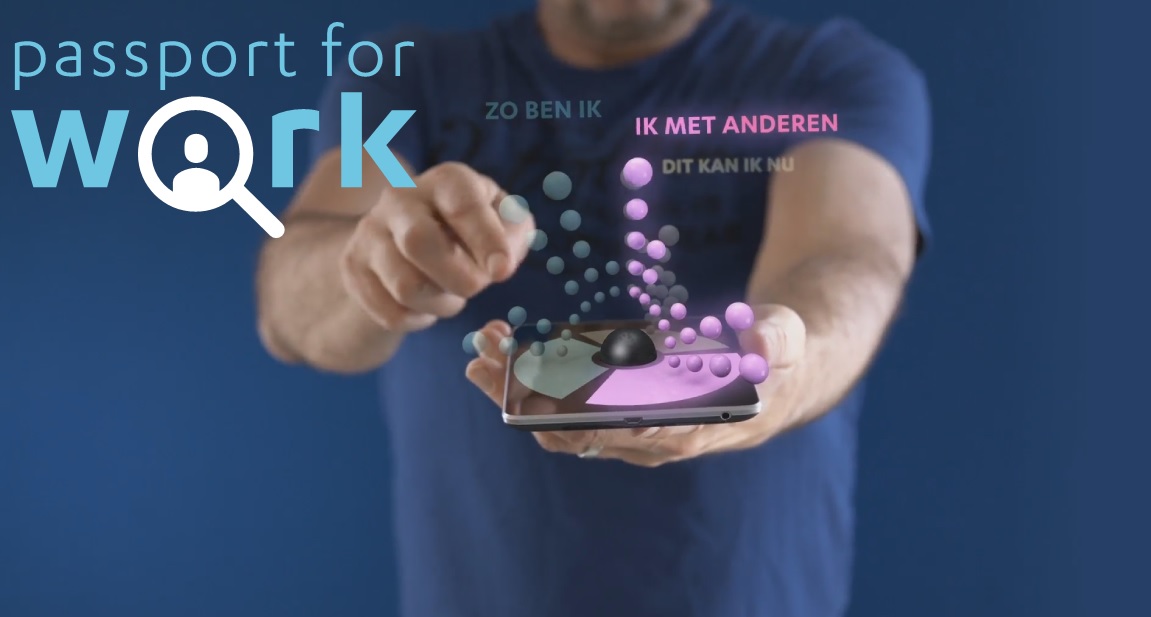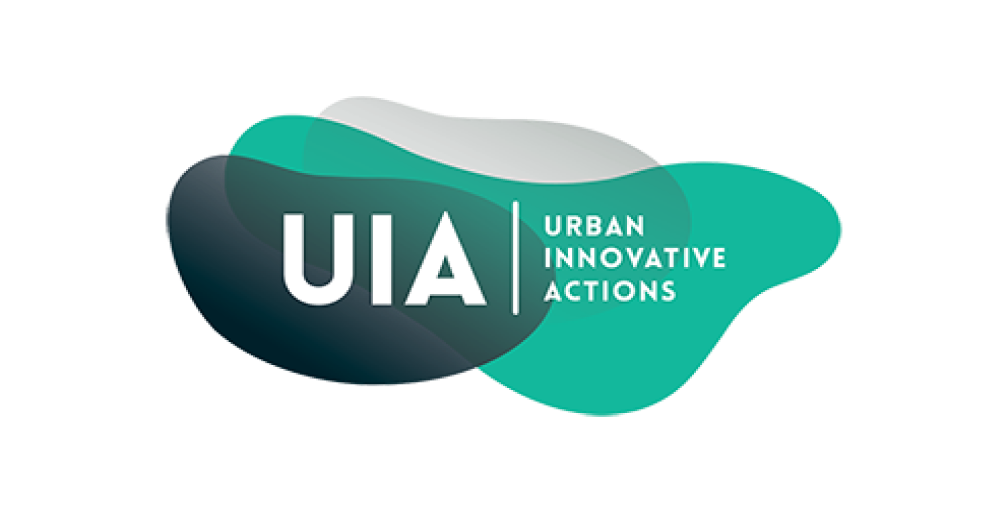
Eindhoven
Netherlands

This is a case study as part of an UIA report. You can access all of the project's resources on its project collection page.
1. Short project description
Eindhoven (population 203,229) is the epitome of the Dutch Brainport region, declared the world’s smartest region in 2011. It is home to many leading high-tech firms, and is a key player in The Netherlands’ transition from fossil fuels towards renewable energy sources. While it is home to thousands of tech and IT companies facing a growing shortage of personnel, there is also an increasing number of residents who struggle to keep up with technological growth and its related occupational demands. This growth paradox is central to the Passport4Work (P4W) project, in which promoting the influx of appropriate staff into growth sectors coincides with enabling those at risk of being left behind.
In essence, P4W represents a highly personalized and gamified online platform, through which individuals are guided in the development of their skill-based passport for work (by means of gamified assessment). In P4W, the city of Eindhoven targets specific groups of beneficiaries, for which there is a high sense of urgency. These include those with a relative distance to the labour market in terms of their educational attainment, and employment history.
While Passport4Work’s purpose was not specifically designed around the energy transition, two of its three identified targeted growth sectors – construction and technology, accompanied by healthcare – play a large part in its realization. To illustrate, the Dutch energy transition is reflected by the Eindhoven project “gas-free neighborhoods”. P4W contributes to this project by facilitating the provision of staff for the construction sector (to work as solar panel installers, for instance). In this way, we see that the city’s approach to skills fits within its wider Climate Strategy, which links to the Roadmap 2 pooint in our main report.
The project consortium comprises ten public-private organizations, ranging from industry representatives, public employment services, a platform developer as well as a university.
2. Eindhoven and Just Transitions
The implications from the energy transition in Eindhoven largely stem from a national shift away from natural gas use. Historically, natural gas has been the primary source of heat for most households in the Netherlands. A giant reservoir spanning almost the entirety of the northern province of Groningen has been supplying gas boilers, electricity plants and the Dutch industry at large with natural gas since the 1960s. In recent years, this has caused the ground underneath the province to sink, and there have been increasingly occurring earthquakes, damaging properties of thousands of citizens in the region. It has become apparent, that to meet the 2050 Paris Agreement goals, a complete overhaul of the Dutch heating system is required. The implications are huge, considering the fact that the Netherlands has one of the lowest shares of renewable energy in its total energy consumption (14% compared to the EU average of 22% in 2020) .
As in most of the Netherlands, Eindhoven is also preparing for this structural overhaul. The city is participating in a national pilot program, in which the feasibility of replacing natural gas systems with low-carbon technologies is investigated. In the program, 50,000 properties are to be converted by 2028, ideally serving as a blueprint approach for converting all 8 million properties in the Netherlands by 2050.
One particular concern that has emerged in the Eindhoven pilot project, is the limited availability of alternative low-carbon solutions.
There region is faced with a major labour market challenge: the lack of qualified personnel involved in developing and installing low carbon technologies. The number of vacancies is growing at the fastest pace of the country, whereas the number of people capable of doing the work is unable to keep up. Recent job statistics revealed a unprecedented situation in which the number of vacancies exceeds the number of job seekers . This growing mismatch calls for an integrated labour market approach, in which upskilling, reskilling and crossing sectoral barriers are addressed to increase regional labour participation. There are two barriers currently in the way of realizing this integrated approach.
The first barrier is the vicious cycle in which a prolonged period of unemployment reinforces feelings of discouragement and a lack of motivation among the region’s growing group of vulnerable citizens (characterized by low educational attainment levels, and little to no work experience), and vice versa. They run the risk of becoming increasingly reliant on social welfare and becoming alienated from the labour market, which is detrimental to their employability and wellbeing, and ultimately impedes the transition to a green economy.
The second barrier is more fundamental by nature and transcends the Eindhoven region: the lack of transparency on jobs, the appropriate skills, and people who can do these jobs. This information is necessary to develop appropriate upskilling and reskilling activities and to match the right person to the right job. By focusing on skills acquired in a variety of contexts (not necessarily in a classroom), it is more likely that an individual can cross traditional boundaries between industry sectors (which are mostly based on assumptions based on diplomas and past work experience).
3. How does the UIA intervention promote Just Transitions ?
Passport4Work’s primary objective is contributing to a skills-based economy in the Netherlands. This is done in two parallel phases. One the one hand, by developing an online, skills-based platform, while on the other hand contributing to a structural shift towards a skills-based economy in the Netherlands.
As for the first phase, an online platform was built to enable individuals in the development of their passport for work (through several assessments). This passport (comprising an individual’s skills) can be used for job matching purposes by sharing it with prospective employers, while also revealing skills gaps for specific occupations. In this regard, P4W focuses heavily on soft skills (also known as general skills which transcend specific occupations, such as active listening) to increase the odds of intersectoral mobility occurring.
Traditionally, soft skill assessments are conducted in a survey-based manner. Incorporating the gamification elements is known to trigger several motivational benefits. As such, to cater to the motivation of the target beneficiaries, gamification was applied to increase the likelihood that individuals actively engage with the platform. This has resulted in the development of several neurogames, as well as video-based situational judgement tests (SJT’s). In the latter, a role-playing scenario is shown, in which several actors simulate a certain skill (for example, active listening). The person doing the test is asked to identify appropriate and inappropriate behavior (such as maintaining eye contact, or asking follow-up questions in the active listening example). Based on the outcomes of the soft skills assessment, eLearnings are offered to remediate skill gaps, and job matching within the three targeted industry sectors is facilitated.
Job matching takes place through an algorithm, which matches an individual’s skills with those required for a particular vacancy. The principle behind this is promoting intersectoral mobility. Throughout the project, several examples of this have emerged. One example is a former restaurant chef who lost his job during the pandemic lockdown, who went on to work as a street paver based on his detail-orientation and teamwork skills.
Assessing an individual’s skills is merely a first step in the process of matching. An important prerequisite for this match to take place is a shared understanding of the skills involved not only on the supply side, but also on the demand side. This is where the second phase of the project comes in. To facilitate a shared understanding of skills among all labour market stakeholders, P4W invested heavily in the realization of a Dutch skills language. To achieve this, the (US-based) taxonomy O*NET was implemented in the platform. O*NET comprises approximately 250 measures of skills, abilities, work activities and job characteristics for over a thousand occupations. By applying this information to the Dutch labour market context (with its specific employer needs), and using as a basis for both vacancies and resumes, it allows for targeted upskilling, reskilling as well as job matching.
4. Keys to success
a. A rigourous analysis of employer needs
With P4W using O*NET as a basis, it quickly became apparent that there are concerns about the applicability of its data to the Dutch labour market context. After all, O*NET is based on American occupational analyses. To avoid a margin of error in the platform’s job matching module, it was decided to replicate the American O*NET survey among thousands of employers and employees across The Netherlands. The survey was also enhanced by incorporating a future skills section (to facilitate skills forecasting) and the results were deepened through expert workshops with industry representatives. Through these workshops, nuances between skills across occupations came to light (for example, by identifying the implications of active listening in health care as opposed to construction).
b. Strategic partnerships
Rather than re-inventing the wheel, Passport4Work is mostly building on existing initiatives and ideas. It has established partnerships with other prominent Dutch labour market initiatives to contribute to a shared Dutch movement towards a skills-based economy. This maximizes the impact of the project’s efforts (for example, by feeding the results of the national O*NET survey into the Dutch skills language CompetentNL, which is governed by the national public employment service).
c. Emphasizing the importance of validated assessments
From the beginning of the project, employers have been very vocal about their desire for high-quality information which is suitable for decision making. To accommodate this, the gamified assessments were developed in adherence with scientific psychometric principles to ensure their reliability and validity. This has resulted in a robust assessment and matching module, which has been subjected to academic scrutiny, testing and analysis.
5. Upscaling potential
There are several aspects of the Passport4Work project which have strong replication potential. First of all it’s parallel approach, in which both the development of a service (in the case of P4W, an online platform) coincided with managing its broader context. Passport4Work could not succeed in isolation, due to its dependency on governing labour market actors, employers, as well as other projects which share a similar objective. Reaching out to these stakeholders in the early stages of the project, has increased the likelihood of successful upscaling, and reduced a previously fragmented landscape.
Second, the project has been bold about its ambition. While it is a regional project, its ambition encompasses the entire Dutch labour market. By doing so, it has been able to contribute to a national movement towards a skills-based economy, in which its generated resources can be used to contribute to the common good, even after the project’s end date.
Third and finally, the project has challenged itself throughout its lifeline through prototyping and experimentation to constantly test its assumptions. This has resulted in a few rather dramatic overhauls of the platform. For example, in one of the first prototypes, assessments were created for each of the 103 included skills. Over time, it became apparent that the time-investment required by individuals completing the assessments was going to exceed over a hundred hours, and that employers would be unable to make sense of all the information. At this point, it was decided to overhaul the assessment model by applying a clustering model which has eliminated both of these concerns. These insights would not have emerged without the frequent gathering of feedback of the targeted beneficiaries.
About this resource
The Urban Innovative Actions (UIA) is a European Union initiative that provided funding to urban areas across Europe to test new and unproven solutions to urban challenges. The initiative had a total ERDF budget of €372 million for 2014-2020.
Similar content






Want to replicate this urban practice in your city?
Apply to an EUI City-to-City Exchange
Connect with a peer city who can bring you solutions and expertise and apply together to receive EUI support
More infos on EUI websiteBrowse existing Innovative Actions looking for Transfer Partners and cities willing to do a City-to-City Exchange looking for peers